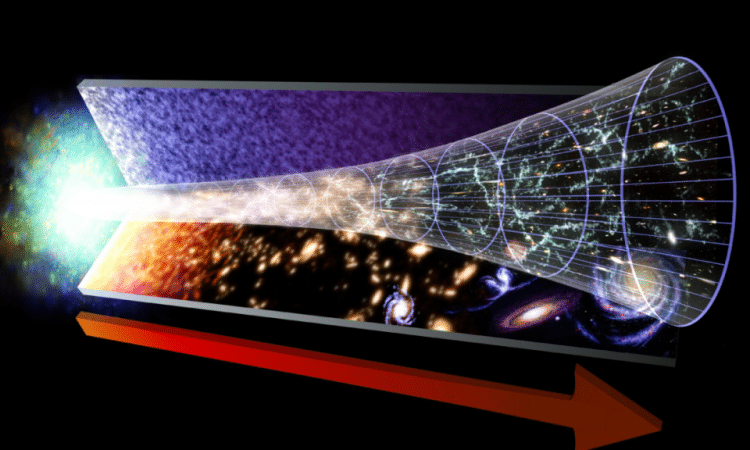
One thing is certain: the early universe was a chaotic place. Here’s a time-lapse simulation of those all-important first moments, the Big Bang
Believe it or not, physicists are still trying to understand the universe when he was only . And although we have made significant progress on the Big Bang in the last century, the situation is very complex. What we know is that about 13.8 billion years ago our universe was incredibly hot (with temperatures over a quadrillion degrees) and incredibly small (the size of a peach, so to speak). Astronomers suspect that the cosmos went through a period of sudden expansion when he had less than a second to live. AND inflationwhich we talked about in more detail.
Advertisement
How it all began: the Big Bang
In less than a blink of an eye, the universe became much larger (by at least 1052). When this rapid expansion phase ended, whatever caused the inflation decayed, flooding the universe with matter and radiation (but we don’t know how). A few minutes later, they appeared. Before that moment the universe was too hot and dense for anything stable to form. It was a gigantic mixture of quarks (the fundamental building blocks of atomic nuclei) and gluons (the carriers). And by the time the universe was a dozen minutes old, it had already expanded and cooled enough for quarks to bond together, forming the first protons and neutrons. Those bonds then produced the first hydrogen and helium atoms, which after hundreds of millions of years gave life to the first stars and galaxies.
dark matter
Among things that we don’t know There’s all the talk about the Big Bang. We’ve never seen it, but we know it’s responsible for more than 80% of the matter that makes up the universe. We know for sure how “ordinary” matter originated in the hot, thick soup that it was the primordial cosmosbut we have no idea how and when dark matter appeared on the scene. Then there is inflation itself. We don’t know what provided all the energy needed for the sudden expansion, we don’t even know why it lasted so long or what stopped it.
Asymmetry between matter and antimatter
Another unresolved issue is asymmetry. From experiments, we see that for every particle of matter there is one of antimatter. When we look around the cosmos, however, we only see piles and piles of normal matter and not a drop of antimatter. Something terrible must have happened in the first seconds of the universe to throw this balance off balance, but we don’t know much about it. And there’s also the possibility that after the Big Bang there were tons of small black holes. Those that exist in the current cosmos are all products of death of massive stars. They are the only places where the density of matter can reach the thresholds necessary to trigger the formation of new black holes. But in the early universe, some areas of the cosmos may have reached sufficient density to create black holes without first having to go through the stellar life cycle. Perhaps.
Read more:

